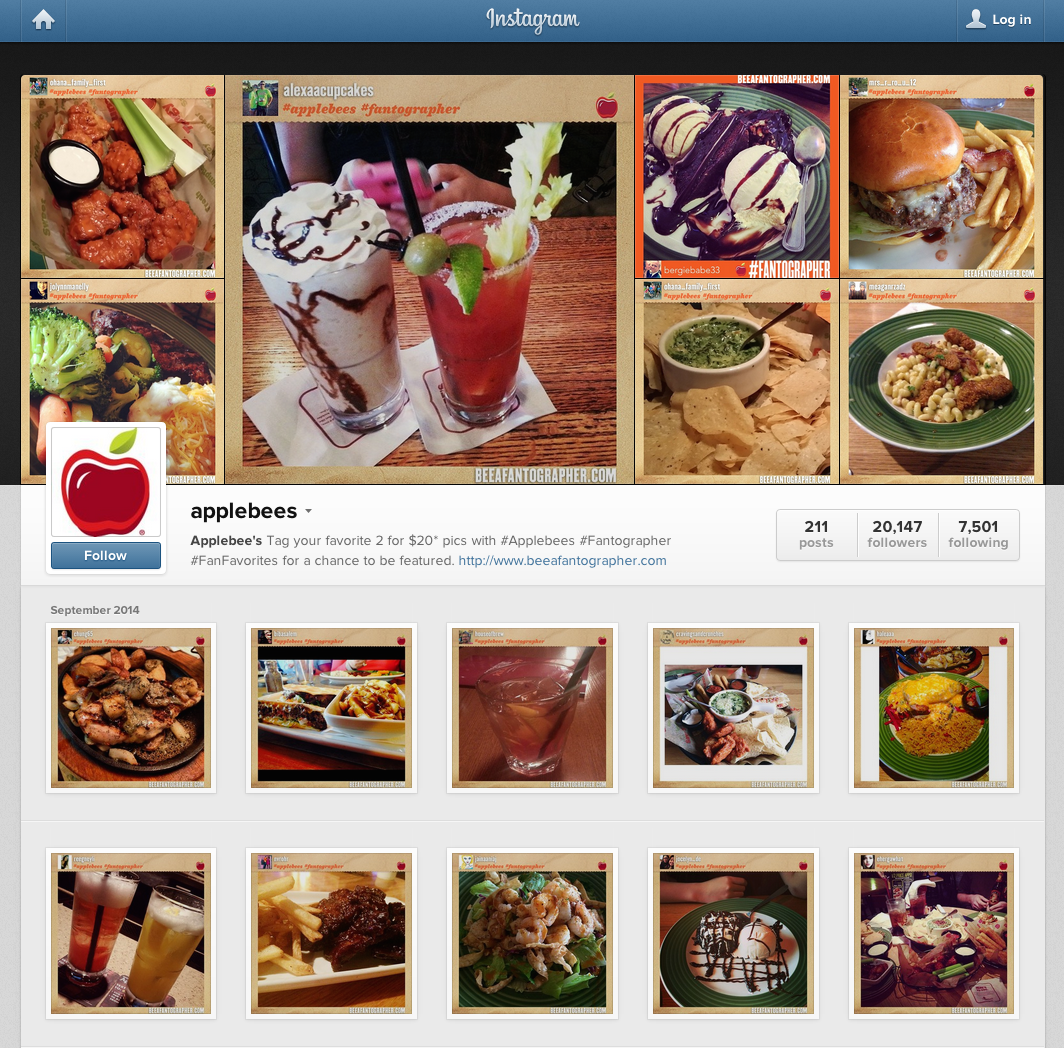A big challenge for consumer-facing brands today is tying together their social media channel outputs, user-generated content, and content marketing campaigns. While there are examples of brands using user-generated content to their advantage, it’s often as an afterthought and it’s rare for content to be amplified across platforms. Applebee’s latest #fantographer campaign bucks the trend.
While there are examples of brands using user-generated content to their advantage, it’s often as an afterthought and it’s rare for content to be amplified across platforms. Applebee’s latest #fantographer campaign bucks the trend.
In July Applebee’s rolled out #fantographer, a social media campaign encouraging users to Instagram their most tantalizing snapshots of Applebee’s meals and dinners. Applebee’s then selects the best of the bunch, curating their own haute cuisine and ensuring the images are also posted on Facebook and Twitter, thereby amplifying the content.

The data is now showing that the campaign has been a tremendous success. Since the campaign’s launch, Applebee’s has gained 4,500 new followers on Instagram alone, marking an increase of 32 percent. Followers now number at 19,750, and engagement has risen 25 percent. In addition it’s predicted that tweets tagged with #fantographer have now appeared on 78 million users’ timelines.
Applebee’s report that they have now collected over 770 images, which gives the restaurant enough visual content to last until next summer.
A look at Applebee’s Instagram feed shows the high quality of submitted images. It begs the questions: why haven’t we seen more examples of brands leveraging user-generated content in their marketing campaigns?

Power To Your Consumers
The most common reason for brands to avoid user-generated content is in the fact that means handing over some of the control to consumers. For some, it may seem like a gamble and this is true to an extent.
Just last year, Applebee’s experienced first hand the effect of negative user content, in what can only be described as a user-generated meltdown. Unravelling on reddit, news unfolded of how an Applebee’s waitress was fired after posting a receipt where a pastor had written of Applebee’s standard tip: “I give God 10% why do you get 18?”
Online communities rose in unison to refute Applebee’s decision and the situation was a PR nightmare.
It makes it all the more impressive that Applebee’s have thrown caution to the wind in their latest campaign, giving over a degree of trust to their users in the name of #fantography.
6 Reasons Brands Should Use User-Generated Content
Applebee’s have every reason to believe that their work has been a success. The rise in the level of engagement speaks for itself, and it easy to see how #fantography has resulted in a huge increase in positive awareness for the brand.
Ultimately, there are several reasons why the use of user-generated content in Applebee’s campaign has been a success, and why all consumer-facing brands should be looking at their options of leveraging the medium:
- Cost-effective: UGC is cheap! Executed well, it’s like having an army of willing volunteers, all looking to spread positive messages about your brand.
- Scalable: UGC can be an incredible way to scale content. In Applebee’s case, it would have taken several months, or even years, to create the amount of high quality images that users were able to create effortlessly in a number of weeks.
- Impactful: Especially for a brand with a product that lends itself to strong visuals, such as Applebee’s, UGC can be hugely impactful. If your product or campaign can motivate one user to post an image or engage online, it’s likely to make an impression on the users who read it too!
- Original: Campaigns based around UGC are almost always novel and original. Consumers who engage on social media are often highly creative, and this filters through into the formation of exciting, original campaigns.
- Builds Community: A good UGC creates an incredible sense of community spirit, going one step further toward building up that collective of dedicated brand advocates that every brand hopes to win.
- Drive Social Engagement: Those brand advocates can then be a primary means of driving social engagement. Studies have shown that those consumers most loyal to brands are far more likely to engage on a consistent basis.
Have you seen any creative examples of brands using user-generated content to drive their marketing campaigns?


